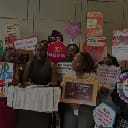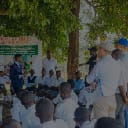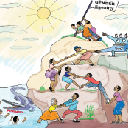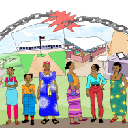Kicked out of school for being pregnant: forced tests violating girls’ rights in East Africa
Angella Auma was only 14 when her life took an abrupt and humiliating turn. In her school in Busia, eastern Uganda, she was summoned to the staff room and confronted about her changing body. A teacher prodded her abdomen in front of others. By the end of that day, Angella’s classmates knew she was pregnant, even though she herself had not yet realised it. Within hours, she had been ordered to leave and told never to return.
Angella’s experience is not unique. For generations, girls across sub-Saharan Africa have endured coercive pregnancy testing that often leads to expulsion. The practice is not only invasive and humiliating but also unlawful under African human rights charters. Yet despite legal rulings and government directives, evidence shows that it remains widespread.
The Bureau of Investigative Journalism (TBIJ) revealed that schools in several African countries continue to conduct these tests, ignoring court decisions and national guidelines. According to David Mwanga, a legal worker who supported Angella, teachers frequently resort to physical examinations. “Teachers examine girls, touching their bodies, checking their breasts, pressing their stomachs,” he explained. At times, schools use pregnancy kits similar to those available in pharmacies, but most often, girls face intrusive physical probing without consent.
In recent years, progress seemed to have been made. West Africa’s highest court and the African Committee of Experts on the Rights and Welfare of the Child ruled that excluding pregnant girls from schools violated binding treaties guaranteeing education, privacy, and freedom from discrimination. Uganda itself issued a government guideline in late 2020 allowing pregnant girls and adolescent mothers to return to school after maternity leave. Yet despite this, Angella’s ordeal and others like hers show that coercive testing and expulsions have not ended.
The charity Women With a Mission (WWM), where Mwanga works, has documented at least six cases since 2021 that breached the government guideline. But WWM only operates in nine of Uganda’s 146 districts, meaning the real numbers are likely much higher. Families often stay silent out of fear of stigma, leaving most cases unreported.
Angella was impregnated by an older man who now awaits trial. But instead of receiving protection, she was shamed by the very institution meant to safeguard her future. “I was stigmatised by the administration,” she recalled in her native Lusamia language. “They kept on talking wrong about me within the community.” Her parents allowed her to be named publicly in hopes her case could inspire change.
Initially, Angella’s school denied both examining and expelling her. But when WWM filed a high court petition, the school quietly agreed to reinstate her. Still, the emotional scars ran too deep. Fearing rejection from teachers and peers, she never went back.
Uganda faces one of the highest adolescent pregnancy rates globally. According to UN data, sub-Saharan Africa leads the world in teenage pregnancies, with Covid-19 closures worsening the crisis. In parts of Uganda, teenage pregnancies surged by nearly 50% during the pandemic, when schools remained shut longer than in almost any other country. The government’s 2020 directive allowing pregnant girls back in school was meant to address this crisis, despite resistance from religious leaders.
“...by speaking out, she has ensured her story becomes more than a private wound—it has become a symbol of resistance, exposing a system still failing to protect its most vulnerable girls.”
But cultural beliefs remain entrenched. “People think pregnant girls are a bad example,” Mwanga explained. “They see them as rotten tomatoes in a basket, spoiling the rest.”
In September 2024, Angella’s case reached a turning point. A high court in Tororo issued a consent order, recognising her right to return. Although the ruling was specific to her, it set a precedent, sparking debates in Uganda’s parliament and beyond. WWM has since used the ruling to support five more girls expelled for pregnancy. All were readmitted. Yet outside WWM’s reach, many more remain excluded.
Ironically, Uganda’s own guidelines have been criticised for embedding discrimination. They mandate termly pregnancy checks for all girls and enforce a one-year maternity leave starting from the third month of pregnancy. Groups like the Initiative for Social and Economic Rights argue this essentially bars pregnant girls from school. Government officials defend the policy as protective, citing the physical demands of school routines, but they also admit moral concerns influenced the decision.
The issue extends beyond Uganda. In Tanzania, until 2021, a blanket ban prevented pregnant girls from attending school altogether. After legal challenges, the government issued a notice permitting girls to return within two years of giving birth. Yet the notice is not legally binding, and forced testing remains common. Rights groups warn that expulsions continue, often hidden from official records. Even as the World Bank tied $500 million in funding to reforms, activists report that on the ground, little has changed.
Back in Busia, Angella now cares for her nine-month-old daughter, whose name means “peace.” She enrolled in a hairdressing course instead of returning to school, joining other young mothers navigating similar struggles. “I would have loved to complete my education like any other person,” she said quietly. Her father, David Wafula, remains bitter about how the school treated her. “What the teachers did was torture,” he said.
Angella once dreamed of designing wedding dresses. Today, that dream is on hold, replaced with the burden of providing for her child and living with the shame forced upon her. But by speaking out, she has ensured her story becomes more than a private wound—it has become a symbol of resistance, exposing a system still failing to protect its most vulnerable girls.
Original article written by Rachel Schraer, The Bureau of Investigative Journalism, click here to read.













